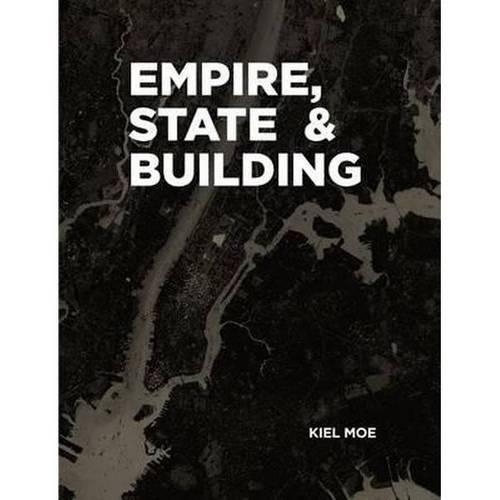
Empire, State & Building
(Hardback, English)
Publishing Details
Empire, State & Building
By (Author) Kiel Moe
Actar Publishers
Actar Publishers
13th November 2017
English
United States
Classifications
General
Non Fiction
Architectural structure and design
History of architecture
Physical Properties
Hardback
264
Width 175mm, Height 228mm
736g
Description
This book considers the material basis of building as a key impetus of both urbanization and the energetics of urban life. The otherwise externalized material geographies and thermodynamics of building's material basis reveal much about the dynamics and efficacy of how we build. This book plots the material history and geography for one plot of land in Manhattan--the parcel of land under the Empire State Building--over the past two hundred years. Through rich illustrations, it tracks all the building material that have passed through this parcel or remain it in geographic and ecological dynamics: spatially (in terms of their geographic material footprints and industrial processes) and quantitatively (in terms of embodied energy, embodied carbon, and emergy flow). In successive chapters, the book articulates the empire and states that are inherent to building, but remain unconsidered--abstract and unknown--by architects.
Reviews
"Through rich illustrations, "Empire, State & Building" deftly tracks all the building material that have passed through this parcel or remain in its geographic and ecological dynamics: spatially (in terms of their geographic material footprints and industrial processes) and quantitatively (in terms of embodied energy, embodied carbon, and energy flow). In successive chapters, "Empire, State & Building" articulates the empire and states that are inherent to building, but remain unconsidered (abstract and unknown) by architects. Impressively informed and informative, "Empire, State & Building" is extraordinarily well written, organized and presented, making it an unreservedly recommended addition to professional, community, and academic library Architectural History collections in general, and Empire State Building supplemental studies reading lists in particular." --Midwest Book Review ..".Moe wants to expand the scope of architects' influence to encompass territory, communication, and speed, the "three great variables" that architects are no longer agents of, at least according to Michel Foucault." --John Hill, A Daily Dose of Architecture "Moe's book successfully navigates the relationships of energy, time, and space in an easily digestible format...." --Architectural Record
Author Bio
Kiel Kenneth Moe is a registered practicing American architect. Moe has taught architecture and energy at University of Illinois at Chicago, Syracuse University, Northeastern University and Harvard Graduate School of Design.
